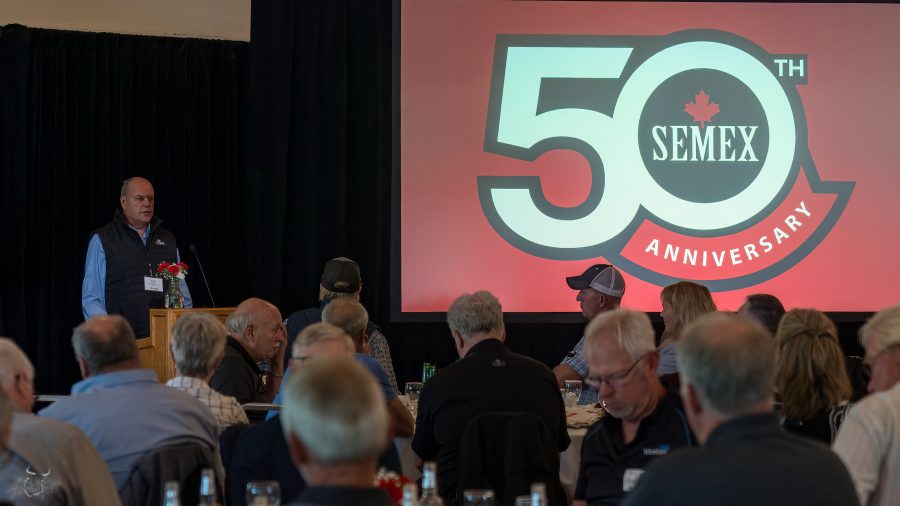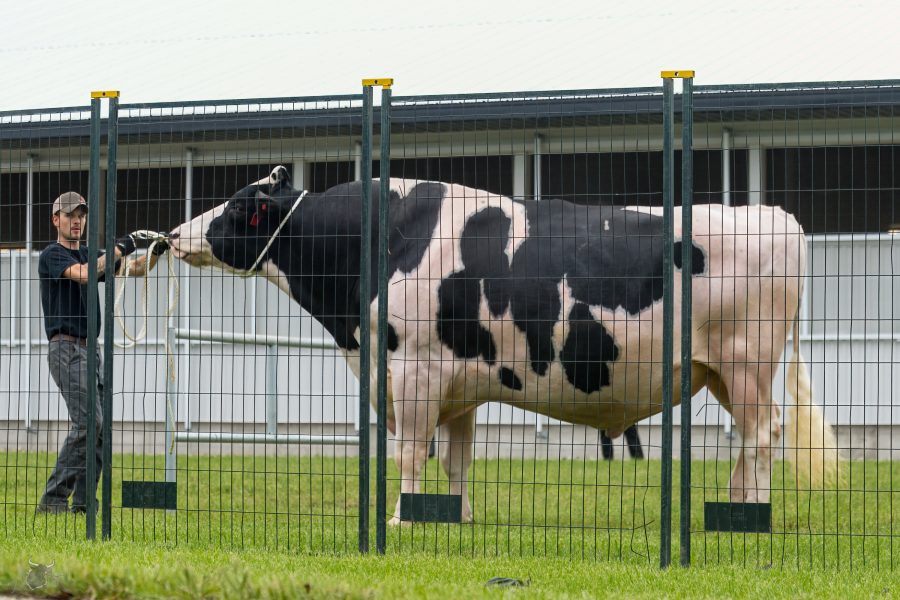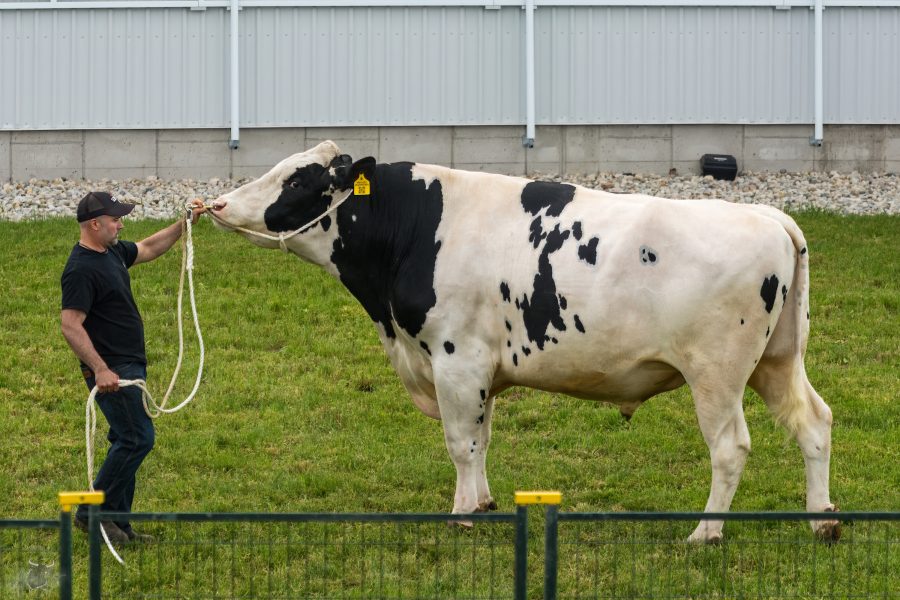Join Semex’s 50th anniversary celebration with a grand bull parade and tributes to its founding fathers. Curious about the legacy and festivities? Discover more here.

Celebrating a milestone like a 50th anniversary is a big deal. For Semex, it marks 50 years of significant impact in the agricultural and livestock industry. Since its start, Semex has been known for innovation, quality, and excellence, continually setting new standards and pushing the industry forward. This success wouldn’t have been possible without the dedication and hard work of the Semex staff from around the world and industry partners. To celebrate this special occasion this past week, staff from and partners gathered at their offices in Guelph for an impressive bull parade followed by a recap of their rich history.

Reflecting on this milestone, Robert Chicone, former CEO of Semex, remarks, ‘Has it been 50 years already?’ Having been part of the industry when Semex was founded, I now have the privilege of witnessing its vibrant 50th birthday. The time has truly flown by! If I were to summarize my thoughts in one paragraph, I would say this: Semex’s 50th anniversary is not just a celebration of a company, but a testament to the resilience and innovation of the Canadian genetics industry, which continues to lead despite a relatively small population of dairy animals. The company’s longevity results from its innovation, research, leadership, service excellence, and collaboration among various industry stakeholders.

Semex’s Rich 50-Year History
The 1940s marked a turning point for bovine artificial insemination in Canada. Dairy producers began using fresh semen but faced challenges due to its short shelf life. Many local centers, often co-ops, started to emerge. In the 1950s, frozen semen trials began. In 1954, a significant breakthrough occurred at the co-op in Waterloo, near Guelph, Ontario. Thanks to the University of Guelph, Waterloo became the first to use only frozen semen. This technology allowed for long-term storage of semen, making it possible to make the best use of top bulls and to combine small centers despite geographical distances.

Frozen semen also made inter-provincial and international trade easier. In 1955, Ontario centers started trading semen across provinces, and by 1959, Canadian semen reached the University of Munich in Germany. This milestone was highlighted in Roy G. Snyder’s book, “Fifty Years of Artificial Insemination in Canada.” The 1960s saw the development of progeny testing programs for young dairy bulls, which sped up genetic improvements. Ontario also led global frozen semen exports through the Ontario Association of Animal Breeders (OAAB) under Roy G. Snyder’s leadership.

As interest from abroad grew, so did OAAB’s business strategies, resulting in partnerships with other Canadian centers. By 1974, recognizing the need for a name reflecting national supply, ‘Semen Exports Canada’ became ‘Semex Canada.’ The 1970s and 1980s were golden years for Semex as Canadian genetics gained global prominence. Semex played a pivotal role in this transition, with north American Holstein genetics replacing European black-and-white Friesians, which was helped by favorable health regulations, giving Semex a leading role in international trade.

During this period, promotional events and technological advances, primarily through Boviteq, highlighted Semex’s leadership. However, increased competition from Europe and the U.S. in the 1990s posed challenges, leading to the creation of the Semex Alliance in 1997. This was a testament to their resilience and adaptability, as they unified Canadian resources to adapt to changing market demands under leaders like Paul Larmer. This spirit of resilience and adaptability continues to guide them as they look towards the future.

In the following years, Semex successfully navigated international regulations and diversified its revenue streams, preparing for the genomics era and ensuring Canada’s continued leadership in bovine genetics. Semex’s journey spans the Atlantic to the Pacific, showcasing the team’s collaboration and dedication.
Semex’s 50-year journey is a powerful story of innovation, perseverance, and community.

To explore the profound impact of Semex’s commitment to genetic progress and technological innovation on the AI industry, we invite you to read more in Celebrating 50 Years of Semex: A Symbol of Genetic Progress and Technological Innovation. We hope this content will inspire you and deepen your understanding of their journey.











